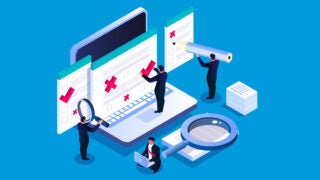
Climate change is civilization’s stress test, so government and businesses scramble for solutions. The Biden administration proposes $2 trillion for infrastructure and clean energy while the city of Los Angeles is preparing for a zero-emissions future — topic of an April 19 USC Facebook Live event. Ahead of Earth Day, USC experts examine how society is bracing for global warming.
Contact: Gary Polakovic (323) 527-7770 or polakovi@usc.edu
With lifelines at risk, it’s time to plan for severe disruptions

Najmedin Meshkati is a professor of civil and environmental engineering at the USC Viterbi School of Engineering. He is an expert in safety and reliability of complex technological systems, accidents and disasters, and electrical industry regulation.
“We are vulnerable because climate change causes extreme events that are more frequent and severe that impact our lifelines, such as transportation, communication, energy and sewage systems. We need to think about the unthinkable because severe events once thought unthinkable are becoming the new normal,” Meshkati said.
He added:
- Society must get ready for climate-induced catastrophes similar to earthquake preparation.
- Energy infrastructure risks includes wildfires that drove PG&E to bankruptcy, the deep freeze that shut down Texas’ power grid and heat waves in France that render lakes and rivers too warm to cool nuclear power plants.
- Utilities are notoriously slow to adapt and innovate, “calcified cultures as hard to move as super tankers,” he said.
- Resiliency begins with proactive safety cultures that integrate sociology, policy and engineering.
Contact: meshkati@usc.edu
Federal funds for energy, infrastructure must address climate

Hilda Blanco is project director of the Center for Sustainable Cities-METRANS Center at the USC Price School of Public Policy. She’s an expert on climate change policy and urban planning.
“President Biden’s bill (for infrastructure and clean energy) invests a lot of money, we haven’t seen anything like this in a long time. It would give society an opportunity to deal with issues of sustainability that will help as the climate continues to heat up,” Blanco said.
She added:
- Laws to address climate change must address disadvantaged populations, including rural communities that lose jobs as fossil fuel extraction declines.
- Redesigning the urban landscape for energy efficiency and resilience will be necessary to adapt to climate change.
- Urban heat waves will exact a toll on L.A.’s growing homeless population exposed to the elements.
- Fire planning and preparation is imperative; California’s 2020 wildfires emitted more carbon dioxide than from statewide energy production last year.
Contact: hblanco@usc.edu
As wildfire hazards grow, new approaches are needed

Bill Deverell is a professor and historian at the USC Dornsife College of Letters, Arts and Sciences. He’s an expert of California history and leads “The West on Fire” program at USC.
“Fire is part of the equation of climate change. We have fires that are too hot, too frequent and too big, as we saw across California and the West last year. It’s compounded by drought, atmospheric rivers and mudslides. This is real now, not something for the future,” Deverell said.
He added:
- Rebuilding homes in fire-prone areas needs reevaluating for climate resiliency.
- Electrical transmission lines traversing miles of brush and forest are at risk due to global warming.
- More drought, fires and development risks spreading fires from the urban-wildland interface into suburban and urban neighborhoods.
- Fire has ripple effects, including respiratory harm and other health effects, as well as impacts on tourism and recreation.
Contact: deverell@usc.edu
Building sustainable coastline is best defense for sea level rise

Melodie Grubbs is a science, research and policy specialist at USC Sea Grant based at the Dornsife College of Letters, Arts and Sciences. She is an expert in mitigating coastal impacts of sea level rise.
“We need to create a sustainable coastline that can adapt to sea level rise due to climate change. We need to prepare for impacts to roads, buildings, sewage plants and critical infrastructure. Increasingly, we’re looking to nature-based solutions, like building sand dunes and wetlands to absorb the ocean’s energy. The good news is people can see the impacts now, so the mentality is changing; but time is ticking and we need to scale up solutions and apply them to wider swaths of the coast,” Grubbs said.
She added:
- Sea level will rise 1 to 2 feet in Southern California within 30 years — guaranteed.
- Absent action, the L.A. coast will likely lose half its beaches by the end of the century.
- El Niño storm events will exacerbate coastal damage in coming decades.
- Byzantine regulatory processes, multiple jurisdictions and competing stakeholder interests make coastal adaptation a challenging process.
- In some instances, retreat from the coast will be necessary, “but there’s nowhere to go back where development is built against the shore,” she said.
Contact: mgrubbs@usc.edu
Planting shade trees across cities is a cost-effective solution

Esther Margulies is associate professor of landscape architecture and urbanism at the USC School of Architecture. She’s an expert in sustainability and open spaces.
“Infrastructure comes in different colors, such as grey and green. We all know grey, like bridges, dams and roads; but green infrastructure helps cool cities, conserve water, benefit wildlife and create parks, open space and bikeways that make cities more liveable. People like living in cities, so we need to build cities better in response to climate change,” Margulies said.
She added:
- Urban forestry is the most cost-effective way to cool cities; shade trees can reduce heat from pavement by 20 to 40 degrees Fahrenheit.
- By 2050, L.A. days over 95 degrees could nearly triple in vulnerable communities.
- Low-income communities face greater health risk because they have less trees, resources to travel to cooler areas and income to run indoor A/C.
- L.A. green infrastructure responses include revitalizing the L.A. River, the proposed Liberty Canyon wildlife overpass over U.S. 101, Mayor Eric Garcetti’s Green New Deal and the USC and L.A. city urban trees initiative on the Eastside.
Contact: emarguli@usc.edu
Photo caption: Earth rises over lunar landscape in this remastered image from the Apollo 17 mission in 1972.
Photo credit: NASA/Goddard/Arizona State University









